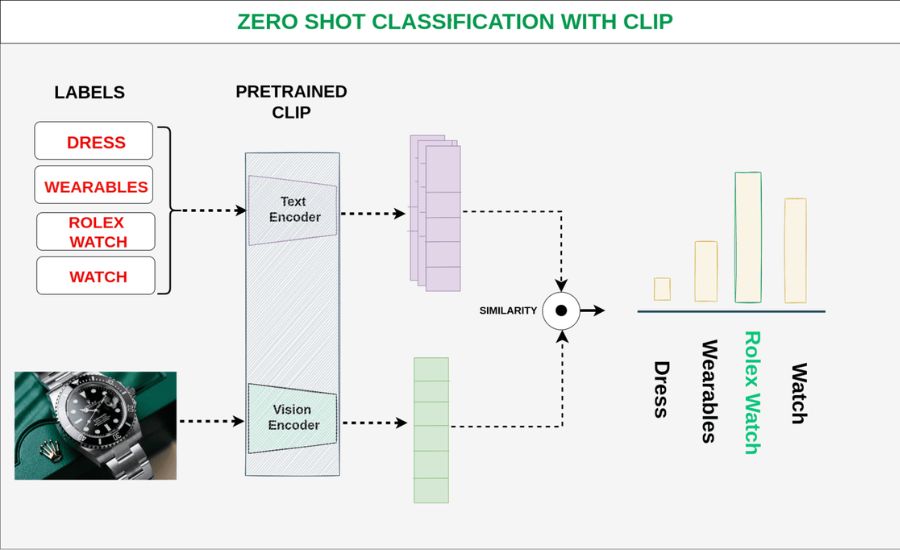Introduction
- In today’s hastily advancing subject of artificial intelligence, leveraging powerful tools and frameworks is fundamental to enhancing the efficiency and effectiveness of deep gaining knowledge of projects.Clip Vision Model: Sd1.5/Pytorch_Model.Bin, extensively recognized for its flexibility and user-friendly nature, makes use of the pytorch_model.Bin record layout to simplify the control of deep mastering fashions.
- On the other hand, FluxGym stands out as a robust companion in this ecosystem, offering advanced optimization features specifically designed to enhance machine learning workflows within the Julia programming language.
- In this article, we’ll explore how the pytorch_model.bin format can be seamlessly integrated into the FluxGym framework, unlocking greater performance and scalability for machine learning tasks. By combining the strengths of both PyTorch and FluxGym, users can take full advantage of these powerful tools to push the boundaries of AI development and optimize their deep learning applications.
What is PyTorch_model.bin and FluxGym?
- PyTorch_model.Bin is a binary report format that shops pre-skilled deep gaining knowledge of models created the use of PyTorch, a powerful and flexible framework used broadly in the synthetic intelligence community. These models function a foundational constructing block for numerous AI applications, along with photo popularity, speech processing, and natural language knowledge. PyTorch’s modular technique lets in for easy customization, making it a preferred preference for each studies and enterprise use.
- On the alternative hand, FluxGym represents a contemporary fitness platform designed to leverage advanced technology to personalize exercise experiences. By probably integrating AI and records analytics, FluxGym can tailor fitness programs to satisfy the man or woman needs of customers, enhancing their average workout efficiency and fitness results.
Understanding PyTorch_model.bin
- The PyTorch_model.Bin file is a important component in AI-driven packages, particularly for education and deploying models. These pre-educated fashions can be fine-tuned for specific duties or used as-is, relying on the trouble handy. This adaptability makes PyTorch models flexible across many industries, inclusive of healthcare, health, and greater, in which customized statistics and predictive insights are tremendously valued.
Introducing FluxGym
- Imagine FluxGym as a modern fitness solution that integrates real-time data monitoring to optimize workout plans. It should track vital metrics inclusive of heart rate, muscle fatigue, and past overall performance, and use this data to modify education routines dynamically. By combining gadget getting to know strategies, such as the ones provided by way of PyTorch fashions, FluxGym can provide tailor-made pointers, helping people acquire their health desires extra successfully at the same time as minimizing the danger of harm.
- Integrating PyTorch_model.bin with FluxGym
- The potential of combining PyTorch_model.bin with FluxGym is transformative for the fitness industry. By incorporating AI models into the fitness ecosystem, FluxGym can predict and customize workout regimens to suit individual needs. This personalized approach ensures that users engage in workouts optimized for their body’s specific requirements, improving both efficiency and safety.
Key Considerations for Integration
- When merging these technologies, there are numerous essential elements to do not forget, consisting of facts privateness, model accuracy, and user engagement. Ensuring the safety of private records is vital for retaining agree with, whilst offering specific and actionable tips helps enhance the general user enjoy. Furthermore, continuous monitoring and refining of AI models can ensure that customers enjoy the maximum updated and powerful health techniques.
- Example Use Case: Education and Fitness Science
- In educational contexts, the combination of PyTorch models and FluxGym could serve as an excellent teaching tool for subjects like biomechanics and exercise science. Using AI-driven simulations, college students can explore the impact of various exercises on the human body, presenting an interactive manner to study fitness, anatomy, and the effectiveness of numerous training techniques.
- How PyTorch_model.bin Enhances Fitness Applications
- PyTorch_model.bin can be particularly beneficial in the development of personalized fitness applications. By analyzing data, such as past performance and physical condition, AI models can recommend customized training and diet plans. These models can also predict recovery times and adapt routines accordingly, helping users improve their physical performance, recovery rate, and overall health outcomes.
- In conclusion, the integration of PyTorch_model.bin with FluxGym could significantly reshape the fitness industry by offering smarter, data-driven solutions for optimizing personal health and performance. By leveraging the power of AI and machine learning, users can access highly personalized fitness programs that deliver meaningful results.
Understanding pytorch_model.bin and FluxGym

The pytorch_model.Bin file format is an essential issue of the PyTorch framework, serving as the garage layout for trained neural community fashions. This binary record encapsulates the entire country of a model, such as its structure, found out weights, and education parameters.
By preserving all necessary information, pytorch_model.bin allows for seamless model sharing and reloading across various platforms and computing environments. This capability is especially important for deploying models into production environments and for ensuring reproducibility in research, where consistency across experiments is vital.
Key Benefits of pytorch_model.bin
- Portability: The binary format allows models to be shared and used across different platforms, ensuring that there are no compatibility issues when transitioning between environments. This makes it easier to work with models in diverse development or production settings.
- Efficiency: As a compact file format, pytorch_model.bin enables fast loading and unloading of models. This efficiency is particularly beneficial when working with large models that require frequent access during training or inference.
- Versatility: The format supports complex, multi-layer neural networks, and it performs a critical function in switch learning. This manner that pre-trained models may be tailored to new obligations with minimum adjustments, saving each time and computational resources.
What is FluxGym?
FluxGym is a robust library built on the Flux.jl framework, which is part of the Julia programming language ecosystem. FluxGym is designed to streamline the process of managing deep learning experiments. It gives a set of powerful equipment that assist in hyperparameter optimization, actual-time overall performance tracking, and experiment management. With FluxGym, users can effectively manipulate their deep studying workflows, making it a treasured asset for each small-scale and huge-scale AI tasks.
Core Features of FluxGym
- Experiment Management: FluxGym simplifies the setup, execution, and tracking of multiple training runs, making it easier to manage complex deep learning experiments. This function ensures that customers can effectively screen the development and results of various trials.
- Hyperparameter Optimization: The library consists of integrated techniques for optimizing hyperparameters, which might be essential for improving model overall performance. FluxGym can automatically alter parameters to discover the quality aggregate for a given venture, leading to extra accurate and efficient fashions.
- Scalability: FluxGym is designed to scale across multiple machines or clusters, allowing users to harness greater computational power for large-scale deep learning tasks. This scalability makes it ideal for training large models or running experiments that require substantial computational resources.
Integrating pytorch_model.bin with FluxGym
- While FluxGym is within the main constructed for the Julia surroundings, developers have created modern solutions to combine pytorch_model.Bin files with FluxGym. By bridging the gap most of the 2 systems, customers can take advantage of the strengths of every PyTorch and FluxGym, deliberating an improved and bendy tool getting to know workflow.
- Strategies for Integrating pytorch_model.bin with FluxGym
- Conversion Tools: There are tools available that can convert PyTorch models into a format compatible with Julia, enabling seamless integration with FluxGym. These tools help load pytorch_model.bin files directly into the FluxGym environment, making it easier to utilize pre-trained PyTorch models for further refinement or experimentation.
- Interoperability Layers: Middleware solutions can be developed to allow for direct interaction between PyTorch and FluxGym. These layers serve as a bridge, enabling users to work with models from both frameworks without needing to convert or restructure their models.
- API Extensions: One approach is to extend FluxGym’s API to natively support pytorch_model.bin files. By doing so, users can integrate PyTorch models directly into their FluxGym workflows, enhancing the library’s functionality and compatibility across different machine learning ecosystems.
- Practical Application Example: Improving Facial Recognition Models
- Imagine a data science team working on a facial recognition system that uses a pre-trained pytorch_model.bin model. By integrating this model with FluxGym, the team can fine-tune the model using a new, proprietary dataset that contains unique facial features or demographic variations. FluxGym’s tools for hyperparameter optimization and experiment management would help the team refine the model’s performance, ensuring it becomes more accurate and adaptable to the new dataset. This process of continuous improvement enables the team to achieve better results in real-world applications, such as personalized security systems or advanced customer analytics.
- Exploring the Potential of PyTorch_model.bin in Fitness and Workout Training
- Integrating PyTorch_model.bin into a fitness platform like FluxGym has the potential to transform the way people engage with their workout routines. By utilizing pre-trained models stored in PyTorch_model.bin, FluxGym can offer intelligent virtual trainers capable of providing real-time feedback. These virtual trainers can constantly adapt exercise plans based on a person’s overall performance, fatigue level, and unique health desires. This dynamic approach to fitness guarantees that customers acquire personalised education tailor-made to their particular wishes and development.
- Real-World Impact of PyTorch_model.bin at FluxGym
- In practical terms, FluxGym could harness the power of PyTorch_model.bin to deliver AI-driven fitness solutions. For example, the platform may offer adaptive fitness programs that exchange in real time based totally on user information, inclusive of heart fee, power tiers, or exercise records. By leveraging predictive analytics and gadget mastering models, FluxGym should create a greater enticing and green exercise revel in. This adaptive machine not only helps customers attain their fitness desires quicker however also keeps them influenced by supplying non-stop, customized steerage.
The Future of AI-Driven Fitness Platforms

Looking ahead, the integration of AI models like PyTorch_model.bin into platforms such as FluxGym is expected to evolve significantly. Future developments could lead to more seamless interactions between users and their fitness routines, with models offering deeper insights into workout performance. Enhanced predictive competencies will allow these systems to assume a consumer’s wishes and adjust exercises proactively, making them smarter and extra responsive. As this generation maintains to strengthen, its programs within the fitness and wellness space should amplify, presenting new approaches to screen and improve physical well-being.
Tips for Developers and Users
- For developers aiming to integrate PyTorch_model.bin into fitness platforms, focusing on smooth integration with existing systems, ensuring accurate data analysis, and designing intuitive user interfaces will be essential for success. These elements will help make AI-driven fitness tools more accessible and effective.
- For users, regular engagement with these technologies and providing constructive feedback will play a crucial role in refining the system. The more users interact with AI-powered fitness platforms, the better the system will become at meeting individual needs and enhancing overall workout experiences.
- In summary, combining PyTorch_model.bin with platforms like FluxGym has the potential to revolutionize the fitness industry. Through intelligent, personalized training programs, users can experience more efficient and effective workouts, while developers continue to innovate and refine the technology for a future where fitness training is more dynamic and adaptive than ever before.
- Enhancing Model Training with Cutting-Edge Tools and Techniques
- Tailored Learning Environments
- One of the key strengths of platforms like FluxGym is their ability to create customized and flexible learning environments, designed to simulate various real-world scenarios. This adaptability allows for experimentation with different configurations, ensuring that models are trained under conditions that reflect actual operational requirements. Whether you’re testing for specific performance metrics or optimizing for real-time responses, FluxGym provides the tools to set up the most effective training conditions.
- Maximizing Resource Efficiency
- FluxGym goes a step further by ensuring optimal resource allocation for each experiment. The platform intelligently adjusts the use of computational resources based on the demands of the task, providing a more efficient training process. This dynamic resource management not only improves speed but also ensures that experiments are carried out without unnecessary waste of hardware or software resources, enhancing overall productivity.
- Improving Model Accuracy and Performance
- Fine-Tuning Models with Precision
- FluxGym supports detailed fine-tuning of models, helping users to adjust hyperparameters with precision for maximum performance. By leveraging advanced hyperparameter optimization equipment, users can refine their models to fulfill precise goals, whether it’s improving accuracy, lowering training time, or improving robustness in various situations.
Real-Time Performance Feedback
- One of FluxGym’s standout functions is its capacity to provide actual-time insights into the education system. As the version trains, the platform provides instant feedback at the effects, allowing customers to make on-the-fly modifications. This actual-time guidance is beneficial for exceptional-tuning models at some stage in the schooling method and ensuring most useful outcomes as development progresses.
- Fostering Innovation via Collaboration and Community Engagement
- Seamless Cross-Platform Collaboration
- Unified Collaboration for Multi-Language Teams
- In today’s collaborative environment, interdisciplinary teams often use different tools and programming languages. FluxGym bridges this gap through facilitating seamless collaboration among teams operating with Python and Julia. With integration talents, teams can share and integrate their models, methodologies, and records, streamlining the development manner and making it less difficult to tackle complicated projects.
- Shared Workspaces for Collective Effort
- FluxGym enables the creation of shared workspaces, promoting peer review and collaboration within the platform. Teams can configure these spaces to support collective troubleshooting, experiments, and iterative improvements. This collaborative setup fosters a more efficient workflow, helping to tackle challenges as a group and accelerating progress.
Community-Driven Progress
- The Power of Open Source Contributions
- Both PyTorch and FluxGym advantage from a vibrant, energetic community that continuously contributes to their growth. Open-source contributions force the addition of recent capabilities, trojan horse fixes, and improvements, ensuring that those equipment continue to be at the vanguard of innovation. Developers and statistics scientists alike can leverage these updates to decorate their very own workflows.
- Learning from a Knowledge-Rich Community
- FluxGym and PyTorch users also have access to robust community forums, documentation, and shared experiences. These sources provide precious insights into exceptional practices, troubleshooting, and new strategies, appreciably lowering the mastering curve for freshmen. The collective know-how and resources available ensure that customers can swiftly beautify their competencies and understanding, staying updated with the contemporary developments in the discipline.
- In conclusion, integrating advanced tooling which include FluxGym into system mastering workflows complements model training, first-rate-tuning, and collaboration. Its potential to optimize sources, offer real-time comments, and foster go-platform collaboration makes it an indispensable device for teams aiming to push the boundaries of AI and gadget getting to know development. Furthermore, the network-driven nature of those systems guarantees non-stop innovation and shared know-how, empowering users to live beforehand inside the rapidly evolving field of system getting to know.
Final Words:
The integration of the PyTorch model format (pytorch_model.bin) with platforms like FluxGym represents a powerful fusion of machine learning technologies and real-time fitness solutions. By combining PyTorch’s flexibility and model training capabilities with FluxGym’s advanced optimization tools, the result is a more personalized, data-driven fitness experience. The potential for AI-driven systems to continuously adjust workout plans based on real-time data, along with the ability to fine-tune and improve models efficiently, will revolutionize the way users engage with their fitness regimens. The future of AI-powered fitness tools will continue to evolve, providing smarter, more efficient, and personalized workout routines.
Key Facts:
- PyTorch_model.bin is a binary file that stores pre-trained models in PyTorch, facilitating portability, efficiency, and versatility.
- FluxGym is a powerful platform built on the Julia language that focuses on optimizing and managing deep learning experiments, particularly in the fitness and wellness domain.
- Integration between PyTorch and FluxGym opens up new opportunities for AI-powered, personalized fitness solutions by combining real-time performance tracking with pre-trained machine learning models.
- Key benefits of this integration include adaptability to individual user needs, predictive analytics for workouts, and enhanced safety through personalized recommendations.
- The collaborative aspect of FluxGym, through open-source contributions and community engagement, promotes continuous innovation and access to resources that can improve the overall user and developer experience.
Frequently Asked Questions (FAQs):
- What is PyTorch_model.bin used for?
- It is used to store the state of a pre-trained model in PyTorch. This includes the model architecture, learned weights, and training parameters, allowing easy deployment and fine-tuning for various machine learning tasks.
- How does FluxGym enhance fitness training?
- FluxGym uses machine learning models to provide real-time feedback and dynamically adjust workout plans based on user data (e.g., heart rate, muscle fatigue), ensuring that users get personalized recommendations and improvements.
- Can I integrate pre-trained PyTorch models with FluxGym?
- Yes, it is possible to integrate PyTorch models into FluxGym by using conversion tools, interoperability layers, or API extensions. This allows users to fine-tune pre-trained models for specific fitness applications.
- What benefits does integrating PyTorch with FluxGym bring to fitness?
- The integration allows for personalized, AI-driven training that adapts in real time to a user’s performance, reducing the risk of injury, improving efficiency, and offering highly customized workout plans.
- What is the role of the FluxGym community?
- The FluxGym community helps drive the platform’s development through open-source contributions, shared knowledge, and peer collaboration, ensuring continuous improvement and innovation in the field.
- How does FluxGym optimize resource usage during model training?
- FluxGym dynamically allocates computational resources based on the demands of each experiment, ensuring efficient use of hardware and software resources to improve training speed and reduce waste.
- Can FluxGym be used for large-scale deep learning experiments?
- Yes, FluxGym is designed to scale across multiple machines or clusters, making it suitable for training large models and conducting high-performance experiments that require substantial computational power.
- What is the potential for AI in fitness platforms?
- AI can revolutionize fitness by offering adaptive, real-time workout programs, predicting recovery times, and tailoring recommendations based on individual health data. This improves overall workout efficiency, safety, and goal achievement.
- How can I get started with integrating PyTorch models into FluxGym?
- Developers can explore conversion tools, middleware solutions, and FluxGym’s API extensions to seamlessly load and fine-tune PyTorch models for fitness applications. Leveraging community resources and documentation will also help you get started quickly.
- Why is the combination of PyTorch and FluxGym important for AI-driven fitness solutions?
- The combination offers powerful machine learning capabilities with real-time adaptability, creating personalized fitness experiences. This makes workouts more efficient, safer, and aligned with individual fitness goals.
By combining the strengths of PyTorch and FluxGym, developers and users alike can tap into innovative solutions that advance the realm of AI-powered fitness and model training. The future is certainly promising for fitness enthusiasts, researchers, and AI developers looking to push the boundaries of personalized, data-driven fitness applications.
Read More About Information At: Discovermindfully









